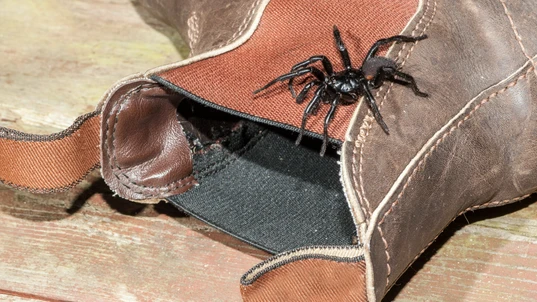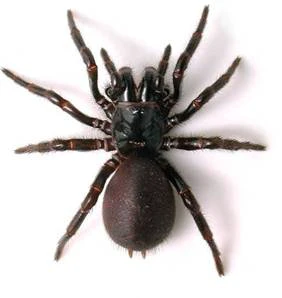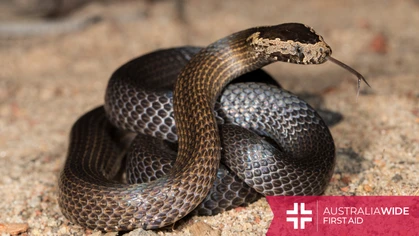First Aid for Funnel Web Spider Bites

Bites and Stings
 Encountering a funnel web spider can be a frightening experience, and if a bite occurs, it is crucial to act swiftly and effectively to minimize the potential risks associated with their venom.
Since the introduction of the funnel web antivenom program in 1980, there have been no deaths attributable to a funnel web bite.
In this article, we will discuss the first aid measures that should be used while the casualty is awaiting an ambulance or being transported to hospital.
Encountering a funnel web spider can be a frightening experience, and if a bite occurs, it is crucial to act swiftly and effectively to minimize the potential risks associated with their venom.
Since the introduction of the funnel web antivenom program in 1980, there have been no deaths attributable to a funnel web bite.
In this article, we will discuss the first aid measures that should be used while the casualty is awaiting an ambulance or being transported to hospital.

On the left is a female Sydney funnel web, and on the right is a male.
Funnel Web Spider
Funnel web spiders are known for their distinctive appearance, characterized by a robust, dark-coloured body and large fangs. In Australia, we have 36 different species of funnel web spiders. Only one, however, is considered deadly – the Sydney Funnel Web (Atrax robustus). As per the name, this spider is found in and around Sydney, as far north as Newcastle and as far south as Illawarra. Their bodies are shiny, hairless and black at the front, with a black or dark plum abdomen. The ludicrously large fangs are a giveaway that you’re dealing with a funnel web, as is their namesake – the web that they weave into a funnel, leading into their underground or tree-hollow burrow. These burrows are occupied by the females of the species, waiting patiently for a wandering male to drop by. Funnel webs can form colonies of up to 100 spiders, and particularly like crevices in rocks or around house foundations. Their venom is deadly to humans and other primates, but surprisingly far less harmful to all other mammals. A large portion of bites actually do not transfer venom from the spider to the victim, but when it does occur, it could be deadly.
Male spiders may incidentally wander into houses, boots, and other objects, while looking for shelter.
What To Do if You Have a Funnel Web in Your Garden
If you live within the area which funnel webs call home, you should always wear gloves when working in your garden. Check your shoes every single time you put them on, in case a wandering male has decided to take refuge there during the day. If you do come across one of the aggressive spiders or an egg sac, there’s no need to kill it. You can actually catch it in a container, and drop it off at a designated drop-off location for the Australian Reptile Park. They will collect your spider, and use it to further their production of the life-saving antivenom. You can find drop-off locations here, along with instructions on how to collect egg sacs and the adult spiders themselves.
Sydney Funnel Web Spider Bite Symptoms
Envenomation by a Sydney Funnel Web is a medical emergency – without treatment, death can occur as quickly as 15 minutes. Due to the serious nature of envenomation, all suspected bites from large black spiders in the Greater Sydney area should be treated as though it were a funnel web. Their venom contains an atraxotoxin protein, which is a powerful neurotoxin. It shorts out synapses in nerves and halts the relaxation cycle. In turn, the nerves experience fibrillation, where they are constantly firing. Overall, the list of symptoms from a funnel web spider bite are extensive:- Painful bite site, which may last for days to weeks
- Localised swelling
- Profuse sweating
- Numbness around the mouth
- Tongue spasms and salivation
- Nausea, vomiting, abdominal pain
- Trouble breathing/shortness of breath
- Muscle spasms
- Confusion or irrationality
- Coma
- Hypertension (high blood pressure)
- Hypotension (low blood pressure) as the condition worsens
- Hypoventilation (shallow breathing) as the condition worsens
- Irreversible cardiac arrest
- Death

What To Do if You are Bitten by a Funnel Web Spider
If you suspect you've been bitten by a funnel web spider, it is essential to remain calm and take the following steps: Seek Immediate Medical Attention Funnel web spider bites can be life-threatening, and immediate medical attention is crucial. Call emergency services or go to the nearest hospital without delay. Do Not Panic Panicking can elevate heart rate and increase the spread of venom through the bloodstream. Stay as calm as possible to minimize the impact of the bite.First Aid for Funnel Web Spider Bite
Your first step should be calling Triple Zero for an ambulance, or get the casualty to a hospital as soon as possible. While waiting for medical professionals to arrive, there are some first aid measures that can be taken to support the victim: Apply a Pressure Immobilization Bandage If possible, apply a pressure immobilization bandage to the bitten limb. Use a bandage or any fabric available and wrap it firmly around the affected area, starting from the bite site and working towards the extremities. Immobilize the limb with a splint to reduce movement. Keep the Victim Calm and Restrained Encourage the person to lie down and remain as still as possible. Restrict movement to prevent the venom from spreading rapidly through the bloodstream. Monitor Vital Signs Keep a close eye on the victim's vital signs, including breathing, pulse, and consciousness. Be prepared to administer CPR if necessary. Do Not Attempt to Suck or Cut the Bite Site Contrary to popular belief, attempting to suck out venom or cut the bite site can do more harm than good. It may lead to infection or worsen tissue damage. Remove Tight Clothing and Jewellery Remove any tight clothing or jewellery near the bite site to allow for potential swelling.Conclusion
Funnel web spider bites are rare but can have severe consequences. Quick and appropriate first aid measures, coupled with prompt medical attention, are crucial for improving the chances of a positive outcome. Remember that first aid is not a substitute for professional medical treatment; it is a means of providing immediate assistance until medical help arrives. If you suspect a funnel web spider bite, prioritize seeking emergency medical care to ensure the best possible outcome for the victim.
Originally published at
https://www.australiawidefirstaid.com.au/resources/first-aid-for-funnel-web-spider-bites
as part of the Australia Wide First Aid Articles Library









